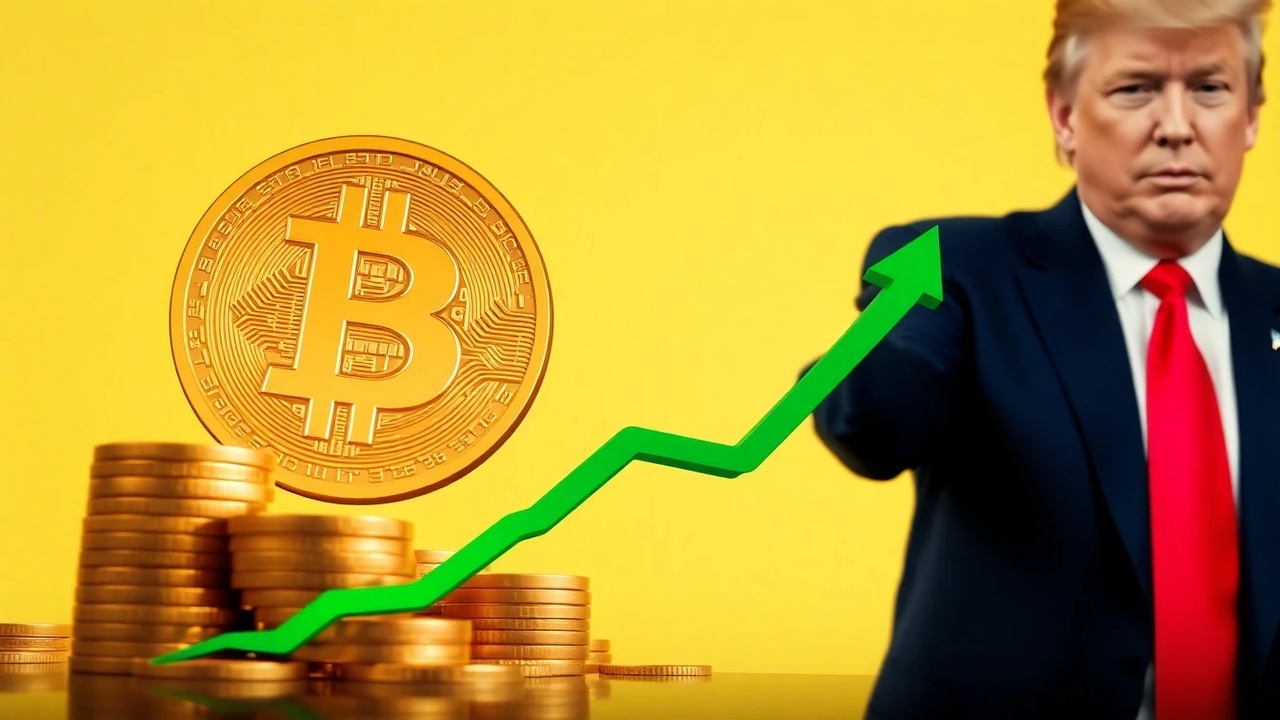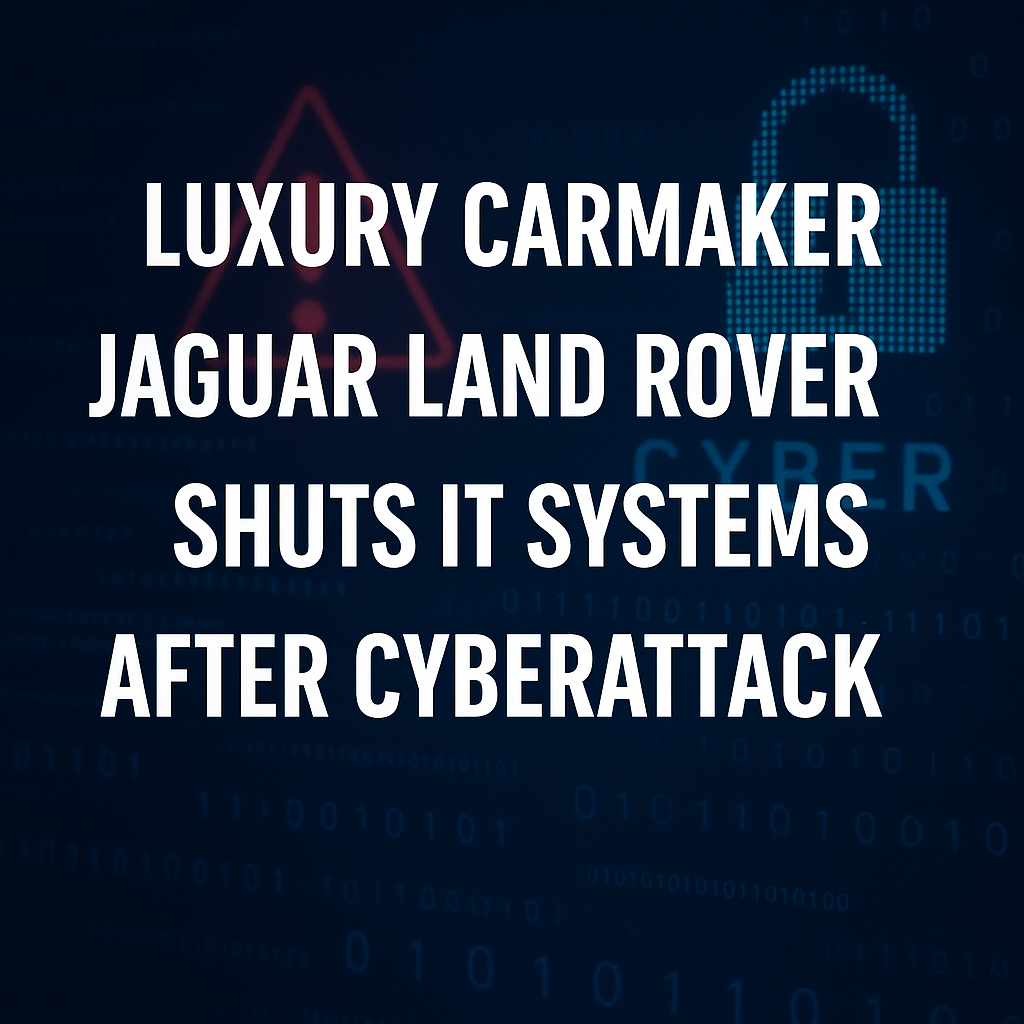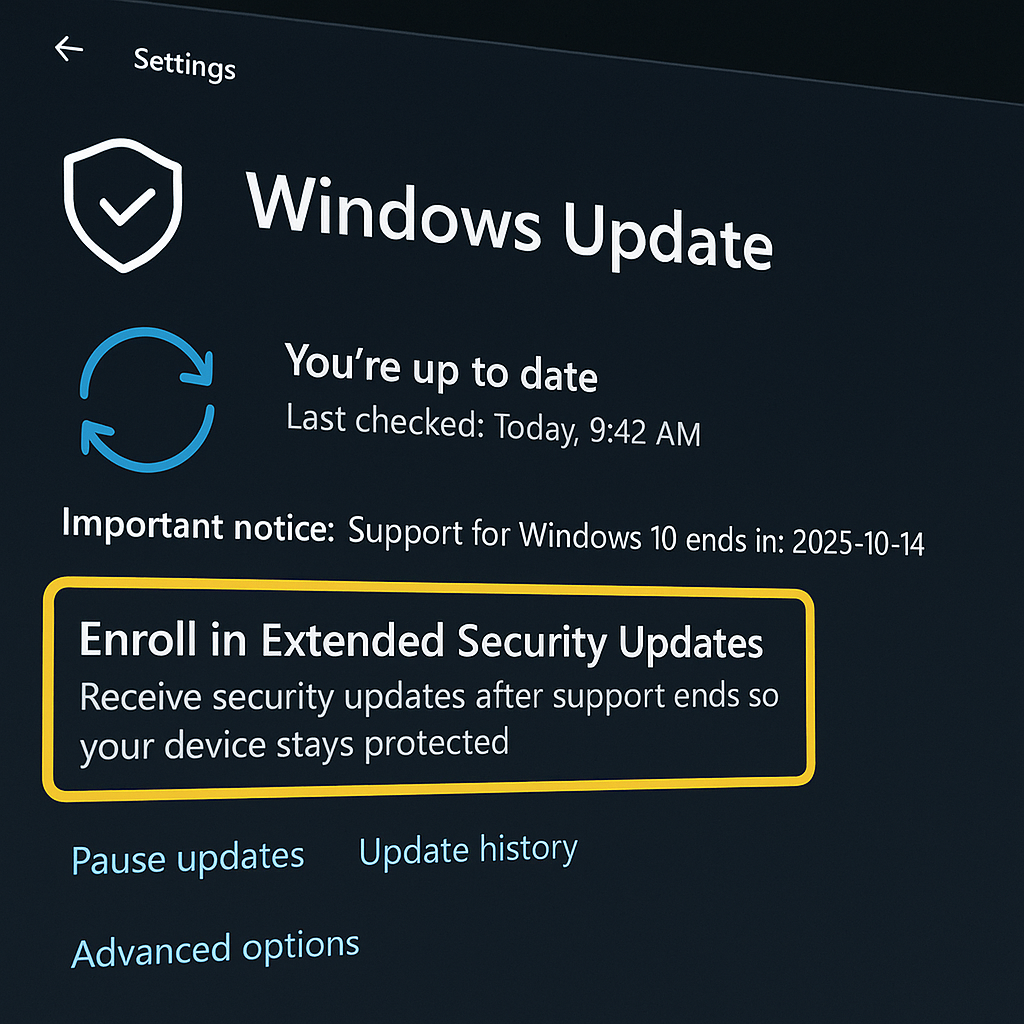business
Will Donald Trump’s Re-Election SPARK a $100,000 Bitcoin Boom?

Bitcoin has once again captured the world’s attention by surpassing an all-time high of $80,000. This new peak comes amid Donald Trump’s re-election campaign, sparking renewed optimism in the cryptocurrency market due to his historically favorable stance on digital assets. Bitcoin’s recent surge suggests that investor confidence in the long-term outlook for crypto remains robust, with some analysts predicting the next target could be a remarkable $100,000.
The Trump Effect on Crypto
The former president’s policies have long been perceived as conducive to the growth of the crypto sector. Trump’s administration prioritized deregulation and promoted capital market growth, which provided fertile ground for Bitcoin and other cryptocurrencies. His return to the political spotlight has brought fresh optimism to crypto investors, many of whom view Trump’s stance as potentially opening the door for regulatory clarity and even favorable legislation.
The Republican party has generally shown a more open approach toward crypto compared to their Democratic counterparts. This difference has amplified interest in how Trump’s re-election bid might influence the regulatory landscape. Given the intense focus on regulatory frameworks in the United States, particularly from the SEC, Trump’s potential return could represent a crucial shift for the industry.
Analysts Weigh In: $100,000 by 2025?
Bitcoin’s latest rally has renewed discussions on whether the premier digital currency could reach the $100,000 milestone by 2025. Several prominent analysts are optimistic, citing the current momentum and supportive market fundamentals as key indicators. Many technical experts believe that Bitcoin could be in the third wave of an Elliott wave pattern—a phase that is often the most explosive. This wave could push Bitcoin to new highs, bolstered by a growing influx of institutional investments and retail interest.
“As Bitcoin approaches and potentially breaks through the $100,000 mark, we could witness a psychological shift in the market that propels even more mainstream interest,” notes Alex Carter, a senior crypto analyst at FinTech Research Group. “If the current bull trend continues, $100,000 by 2025 is not just realistic—it’s highly probable.”
Institutional Investment on the Rise
Institutional interest in Bitcoin has increased significantly in recent years, with companies like MicroStrategy and Tesla famously holding substantial amounts of Bitcoin on their balance sheets. Asset management firms are also eyeing Bitcoin as a way to diversify portfolios amid inflationary pressures and global economic uncertainty. This has led to increased demand, driving up prices as investors seek a hedge against traditional market volatility.
In addition, a new wave of Exchange-Traded Funds (ETFs) focused on cryptocurrency is set to further boost institutional access. Bitcoin ETFs could provide more regulated pathways for investors, thereby attracting conservative institutions and high-net-worth individuals who have so far remained cautious.
Global Economic Factors and Bitcoin’s Role as a Hedge
Amid global economic challenges, Bitcoin’s role as an alternative asset class has become increasingly appealing to investors seeking a hedge against inflation and economic downturns. The recent rally also underscores Bitcoin’s unique positioning as a “safe haven” in times of uncertainty, similar to gold in past decades.
With major financial institutions increasingly treating Bitcoin as “digital gold,” demand continues to rise, reinforcing Bitcoin’s price movements. Additionally, some economists believe that growing geopolitical tensions could contribute to Bitcoin’s upward trajectory, as it provides a decentralized asset class not tied to any particular country or economic system.
Risks and Volatility Ahead
While optimism abounds, it’s worth noting that Bitcoin’s volatility remains a significant factor. The journey to $100,000 will likely see substantial price swings, and regulatory developments—whether favorable or restrictive—could heavily influence Bitcoin’s price.
“Investors need to remain vigilant about the inherent risks associated with such a speculative asset,” warns Diana Xu, Chief Economist at WealthBridge Capital. “While the potential for growth is enormous, Bitcoin is still subject to regulatory uncertainty and market volatility that could impact prices in both directions.”
Conclusion
Bitcoin’s recent ascent past $80,000 has set the stage for what could be one of the most monumental price movements in the cryptocurrency’s history. With Trump’s return to the political arena fueling optimism and institutional interest on the rise, the question on everyone’s mind is clear: will Bitcoin reach $100,000?
As the world watches this volatile market unfold, one thing is certain—Bitcoin’s role in the financial landscape is expanding, and the road ahead promises to be both thrilling and unpredictable. Whether Bitcoin hits the $100,000 milestone or not, its influence and appeal in the financial world are undeniable.
business
🇲🇦 King Mohammed VI’s Speech Sparks Heated Debate in Parliament — “جيل زد يُجيب”
Rabat — October 2025
Inside Morocco’s Parliament, tension and reflection filled the air just hours after His Majesty King Mohammed VI delivered his opening-session speech. What was meant as a national roadmap quickly turned into a day of open confrontation, emotional testimonies, and unexpected admissions from members of both majority and opposition blocs.
🏛️ A Speech That Touched Nerves
The King’s address, described by analysts as “direct and reform-oriented,” called for greater social justice, job creation, and balanced development across Morocco’s regions.
“No village left forgotten, no coast without a hand,” the King declared — a message that resonated deeply with citizens and lawmakers alike.
Within hours, parliamentary corridors buzzed with interviews, arguments, and introspection. Some MPs hailed the speech as “a moral reset,” while others questioned whether the government was capable of turning royal vision into tangible results.
🧠 From Rabat to the Sahara — Gen Z Responds
Younger members of Parliament — labeled as جيل زد (Gen Z) — became the focus of cameras and public curiosity. Many expressed frustration at what they see as a widening gap between political promises and everyday realities faced by Moroccan youth.
“The King spoke about unity and work. We agree — but the youth need a chance to prove themselves,” said one 28-year-old deputy.
“We have the energy; the system just needs to open its doors.”
Another young MP caused a social-media storm after saying that “in some ways, Moroccan social values are stronger than Germany’s.”
Critics accused him of downplaying Europe’s economic strength, while others applauded his pride in Moroccan family cohesion.
He later clarified his words, emphasizing that every nation faces challenges — and that Morocco’s real wealth lies in its people.
💬 Resignation, Reflection, and Responsibility
Just a week earlier, one deputy had submitted his resignation in protest over what he called “a lack of listening to the new generation.”
After the King’s address, he withdrew it.
“The royal speech gave me renewed hope. This is not the time to quit — it’s time to work,” he told reporters.
Across party lines, both RNI and PAM youth wings echoed similar messages: commitment to reform, but also impatience with bureaucracy.
Several MPs criticized ministers who, they said, “do not answer calls, do not reply to written questions, and have lost touch with citizens.”
⚖️ Opposition Voices: ‘A Government in Denial’
Members of the opposition used the session to accuse the cabinet of denial and poor communication, arguing that ministers are “living in a different reality” from citizens struggling with prices and unemployment.
“The royal messages were clear,” said one opposition leader. “The problem is not the King’s vision — it’s implementation.”
🌍 Morocco’s Path Forward
Analysts note that the King’s address aligned with long-standing themes: national cohesion, balanced territorial development, and respect for dignity in public service.
But the 2025 context — economic pressure, youth disillusionment, and the digital activism of Gen Z — gives these calls new urgency.
“This generation communicates differently,” said a policy researcher. “If institutions don’t adapt, they’ll lose credibility.”
🕊️ A Message Beyond Politics
As the parliamentary session ended, one young MP summed up the mood:
“الملك تكلّم… ونحن سنُجيب بالعمل — The King spoke, and we will answer through action.”
For now, the chamber that often echoes with partisan debates found itself united — briefly — under a single message:
Morocco’s future belongs to its youth, but responsibility belongs to everyone.
business
Luxury Carmaker Jaguar Land Rover Shuts IT Systems After Cyberattack

Tata Motors’ luxury brand shuts global IT systems amid suspected ransomware attack; no customer data reported compromised.
Jaguar Land Rover has shut down production and retail systems worldwide after a cyberattack “severely disrupted” operations. A hacking group linked to previous attacks on UK retailers has claimed responsibility. While no customer data appears compromised, the incident halted vehicle registrations and manufacturing, raising fresh alarms about the auto industry’s vulnerability to cyber threats
Jaguar Land Rover Hit by Major Cyberattack
Jaguar Land Rover’s global production and retail operations were brought to a standstill this week after a cyberattack “severely disrupted” its IT systems. The company shut down core applications and suspended manufacturing across key UK plants, including Halewood and Solihull, during one of the busiest sales periods of the year.
The UK’s National Crime Agency has opened an investigation, while the company races to restore operations. JLR confirmed that, as of now, there is no evidence that customer data has been compromise
Immediate Disruption to Plants and Dealers
The September 2 cyber incident forced JLR, owned by India’s Tata Motors, to halt assembly lines, send staff home, and suspend dealer systems used to register new vehicles. Dealers reported they could sell in-stock cars but could not process new registrations, delaying deliveries and revenue flows.
A company spokesperson said:
“We took immediate action to mitigate its impact by proactively shutting down our systems. We are now working at pace to restart our global applications in a controlled manner.”
Expert Reactions
Cybersecurity specialists warn the incident highlights the fragility of digitally integrated manufacturing.
Dray Agha, Senior Manager at Huntress, said:
“This incident highlights the critical vulnerability of modern manufacturing, where a single IT system attack can halt a multi-billion-pound physical production line.”
Aiden Sinnott, a researcher at Sophos, compared the attackers’ tactics to those of notorious cyber gangs:
“They speak English and they are keen on using social media channels. Lapsus$ shared similar tactics and demographics as the Scattered Spider collective.”
Technical Analysis
While JLR has not disclosed the specific intrusion method, several indicators suggest ransomware-style tactics:
- Proactive Shutdowns: JLR’s decision to disable IT and OT (operational technology) systems aligns with standard ransomware containment measures.
- Interconnected Impact: The attack disrupted not just IT but entire supply chains, underscoring the risks of tightly linked digital production networks.
- Extortion Motive Likely: Although no ransom demand has been confirmed, past incidents involving JLR and similar industries suggest data exfiltration and extortion are possible.
The incident underscores the importance of segmentation, real-time monitoring, and robust incident response across manufacturing IT and OT systems.
Impact and Response
- Employees: Factory staff in the UK were sent home as assembly lines stopped.
- Dealers & Customers: Dealers could not register new vehicles, delaying customer deliveries.
- Suppliers: Supply chains faced ripple effects, with halted orders and logistics disruptions.
JLR has engaged external cybersecurity teams and is working with government agencies to restore operations in stages. The company must also prepare for regulatory inquiries and possible long-term trust issues with suppliers and consumers.
Broader Context
The cyberattack comes amid a surge in UK corporate cyber incidents. Retailers including Marks & Spencer, Co-op, and Harrods have all suffered breaches in recent months.
For JLR, this is the second major attack in 2025, following a March breach where a ransomware group claimed to have stolen internal data. The company had invested heavily in cybersecurity modernization, including a contract with Tata Consultancy Services—but repeated incidents suggest lingering vulnerabilities.
Conclusion
Jaguar Land Rover’s shutdown highlights the growing risks of interconnected, digital-first manufacturing. In today’s auto industry, downtime no longer means a local setback—it translates directly into lost global revenue and potential long-term reputational harm.
As JLR works to restore its systems, the incident serves as a stark reminder: in modern manufacturing, operational resilience depends as much on cybersecurity as on engineering.
Sources:
Reuters, Britain’s JLR hit by cyber incident that disrupts production, sales;
The Guardian, Hackers linked to M&S breach claim responsibility for Jaguar Land Rover cyber-attack;
Financial Times, Jaguar Land Rover says production ‘severely’ disrupted by cyber incident;
SecurityWeek, Jaguar Land Rover Operations Severely Disrupted by Cyberattack.
business
Windows 10 Deadline Looms: How to Stay Protected Beyond 2025

Free support ends October 14, 2025; new KB5063709 unlocks Extended Security Updates enrollment to keep critical patches flowing through October 2026.
Microsoft is warning Windows 10 users that free security updates end on October 14, 2025. A new cumulative update, KB5063709, enables a built-in enrollment flow for the Extended Security Updates (ESU) program, offering another year of fixes to October 13, 2026. Edge and WebView2 will still receive updates on Windows 10 until 2028.
With less than two months before Windows 10 reaches end of support, Microsoft has issued a final security warning: after October 14, 2025, no more free fixes. A fresh update, KB5063709, now exposes an “Enroll in Extended Security Updates” option inside Windows Update to help users secure one more year of patches.
- End of free support: Windows 10 (22H2) stops receiving free security updates on Oct. 14, 2025.
- Bridge program: Microsoft’s Consumer ESU extends security fixes to Oct. 13, 2026; enrollment is now available from Settings after installing KB5063709.
- Browser exception: Microsoft Edge and WebView2 Runtime will keep updating on Windows 10 through at least Oct. 2028—even if you don’t buy ESU.
- Scale: Windows 10 still represents roughly 43% of active Windows desktops worldwide (Statcounter, July 2025).
“After October 14, 2025… Microsoft will no longer provide security updates or fixes.” — Microsoft support page. Microsoft Support
“KB5063709… includes a fix for a bug that prevented enrollment in extended security updates.” — BleepingComputer (Aug. 12, 2025). BleepingComputer
“Edge and the WebView2 Runtime will continue to receive updates on Windows 10… until at least October 2028.” — Microsoft Edge lifecycle. Microsoft Learn
A separate storyline continues to roil the transition: a California lawsuit alleges Microsoft set the 2025 cutoff to push AI-ready PCs; Microsoft points to ESU as a safety net, but litigation underscores user anxiety about older, ineligible hardware.
What’s changing on Patch Tuesday:
- KB5063709 (Aug. 2025): Required to expose the ESU enrollment UI under Settings → Update & Security → Windows Update. It also resolves the enrollment-wizard crash and rolls in July’s security fixes (including one zero-day).
Enrollment mechanics (consumer ESU):
- Prereqs: Windows 10 22H2, admin rights, and Microsoft account sign-in (local accounts are not supported for ESU).
- Cost options: $30 one-year ESU, 1,000 Microsoft Rewards points, or free if you enable OneDrive settings sync—all visible in the built-in wizard after KB5063709.
Risk surface if you skip ESU:
- Unpatched remote code execution and privilege-escalation flaws accrue monthly across the kernel, Win32k, networking stack, printing, and driver ecosystems. Even with a supported browser, OS-level exposures (SMB, RPC, LSA, Credential Guard bypasses) remain unmitigated. (Derived from Microsoft monthly CVE cadence; see KB5063709 advisory context.)
Mitigations checklist (if you must remain on Windows 10):
- Enroll in ESU and keep Windows Defender/EDR signatures current.
- Harden attack surface: disable legacy protocols (SMBv1), restrict RDP, enforce LSA protection, and require smartcard/Windows Hello where possible. (General guidance aligned with Microsoft security baselines.)
- Application control: enable ASR rules and Smart App Control-equivalents; prefer standard user rights.
- Network containment: segment legacy Windows 10 devices; use firewall allow-lists and zero-trust access.
- Browser updates: keep Edge/WebView2 current; isolate risky web apps in Application Guard where available.
Impact & Response
Who’s affected: Home users, SMBs, schools, and agencies still running Windows 10—hundreds of millions of devices globally. Statcounter shows Windows 10 usage near 43% in July 2025, meaning a large residual population will face patch gaps without ESU.
Actions to take now:
- Install KB5063709, then open Windows Update → Enroll in Extended Security Updates and choose a plan.
- Plan upgrades to Windows 11 24H2+ or supported alternatives; Microsoft reiterates Oct. 2025 as the firm cutoff for free updates.
Long-term implications: Expect shrinking driver/app support and rising exploit availability on unpatched systems, even as browsers continue to update through 2028.
Background
Microsoft set Windows 10 22H2 as the final feature version and has repeated the Oct. 14, 2025 deadline since 2023–24 guidance. ESU is designed as a temporary bridge, not a multi-year extension. Browser support to 2028 offers partial protection, but it does not replace OS security hardening.
- “ESU buys time—but not immunity. Treat it like a controlled exit ramp: enroll now, apply strict hardening (kill SMBv1, lock down RDP, enforce LSA protection), and move critical workloads to supported platforms within 12 months. The cost of delaying migration will be paid in incident response.” — El Mostafa Ouchen, cybersecurity author & practitioner.
- Microsoft (support notice):
“After October 14, 2025… we will no longer provide security updates or fixes.” - BleepingComputer (on KB5063709):
“The update… fixes a bug that prevented enrollment in extended security updates.” - Microsoft Edge team (lifecycle policy):
“Edge and WebView2 will continue to receive updates on Windows 10 until at least October 2028.”
Conclusion
Microsoft’s warning is unambiguous: Windows 10’s free patch era ends on October 14, 2025. The KB5063709 + ESU path is a short-term safety measure to October 2026, not a strategy. Organizations and households should enroll if needed—but prioritize upgrading or retiring Windows 10 endpoints to reduce exposure as exploit pressure rises.






